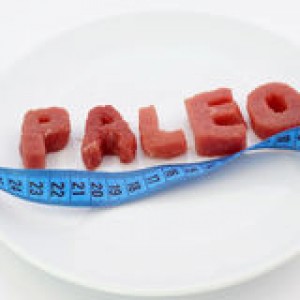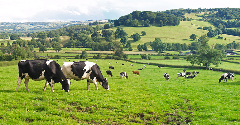News
Scientists analyse Paleo diet
23 Dec 2014The Paleolithic diet, or caveman diet, a weight-loss craze in which people emulate the diet of plants and animals eaten by early humans during the Stone Age, gives modern calorie-counters great freedom because those ancestral diets likely differed substantially over time and space, according to researchers at Georgia State University and Kent State University. Their […]

 The Paleolithic diet, or caveman diet, a weight-loss craze in which people emulate the diet of plants and animals eaten by early humans during the Stone Age, gives modern calorie-counters great freedom because those ancestral diets likely differed substantially over time and space, according to researchers at Georgia State University and Kent State University.
The Paleolithic diet, or caveman diet, a weight-loss craze in which people emulate the diet of plants and animals eaten by early humans during the Stone Age, gives modern calorie-counters great freedom because those ancestral diets likely differed substantially over time and space, according to researchers at Georgia State University and Kent State University.
Their findings are published in The Quarterly Review of Biology.
“Based on evidence that’s been gathered over many decades, there’s very little evidence that any early hominids had very specialized diets or there were specific food categories that seemed particularly important, with only a few possible exceptions,” said Dr. Ken Sayers, a postdoctoral researcher at the Language Research Center of Georgia State. “Some earlier workers had suggested that the diets of bears and pigs—which have an omnivorous, eclectic feeding strategy that varies greatly based on local conditions—share much in common with those of our early ancestors. The data tend to support this view.”
The co-author on the paper, Dr. C. Owen Lovejoy, is a Distinguished Professor of Anthropology at Kent State University, well known for his reconstructions of the socioecology and locomotor behavior of early hominids such as “Ardi” (Ardipithecus ramidus, 4.4 million years old) and “Lucy” (Australopithecus afarensis, 3.2 million years old).
The study examines anatomical, paleoenvironmental and chemical evidence, as well as the feeding behavior of living animals. While early hominids were not great hunters, and their dentition was not great for exploiting many specific categories of plant food, they were most likely dietary “jacks-of-all-trades.”
The review paper covers earliest hominid evolution, from about 6 to 1.6 million years ago. This touches on the beginning of the Paleolithic era, which spans from 2.6 million to roughly 10,000 years ago, but Sayers suggests that the conclusions hold in force for later human evolution as well.
The researchers offer several points that need to be considered by people wishing to emulate the diets of our ancestors:
- It’s very difficult to characterize the Paleo diet. Advocates suggest certain types of foods and a percentage of energy that should come from protein, fats and carbohydrates. These recommendations are based largely on estimations from a limited number of modern human hunter-gatherers, but the diet of early humans was almost certainly much broader.
“I think that you would certainly have lots of variation way beyond what those recommendations are,” Sayers said. “When you’re trying to reconstruct the diet of human ancestors, you want to look at a number of things, including the habitats they lived in, the potential foods that were available, how valuable those various food items would have been in relation to their energy content and how long it takes to handle a food item.”
There’s more to dietary reconstruction than looking at teeth from a chemical perspective or under a microscope. It involves characterizing the environment and taking into consideration factors as disparate as locomotion, digestion and cognitive abilities, Sayers said.
- Our ancestors lived in a wide range of environments, which affected the types of food available. The variables important to feeding decisions would have differed greatly from place to place and over time, and thus greatly differing “optimal diets” would have been predicted, as suggested by modern evolutionary ecology. This is clearly observed today. Hunter-gatherers in a northern climate may have an almost exclusively animal-based diet, while hunter-gatherers near the equator might rely heavily on plant-based resources.
- Even the “same food” isn’t the same today as it was in the olden days. For example, in an earlier study, Sayers investigated the diet of langur monkeys living high in the Nepal Himalaya. At one point in the year, there were wild strawberries on the ground, which seemed to be an attractive food choice. However, the monkeys wouldn’t eat them. Sayers tasted the wild strawberries and found they were incredibly bitter.
“The strawberries that we’re eating in the market have been selected for certain properties, such as being large and sweet,” Sayers said. “The foods that we’re eating today, even in the case of fruits and vegetables, have been selected for desirable properties and would differ from what our ancestors were eating.”
- Early humans had shorter life spans, so it’s difficult to say if their diet was “healthier.”
“Individuals throughout the vast majority of the Stone Age were not living that long. Life expectancies are so high today, at least in many regions of the globe,” Sayers said. “A lot of the diseases that do come about today or have been linked with high-fat diets or things like that have been referred to by some researchers as ‘diseases of affluence.’ They’re diseases that come about simply because we’re living long enough that they can show their effects.”
In recent years, controlled studies have compared the Paleo diet with alternative approaches, and with respect to particular health issues, nutritionists are largely taking a “wait-and-see” attitude towards them.
- Our ancestors were focused on survival, not necessarily eating a balanced diet. “Throughout the vast majority of our evolutionary history, balancing the diet was not a big issue,” Sayers said. “They were simply acquiring enough calories to survive and reproduce. Everyone would agree that ancestral diets didn’t include Twinkies, but I’m sure our ancestors would have eaten them if they grew on trees.”
Related news

Has ‘clean’ had its day?
22 Dec 2025
Wielding clean-label positioning and fortification as marketing levers is a dangerous strategy, and brands would be better off explaining the hows and whys of the ingredients in their products, say experts.
Read more
Celebrating the winners of the Fi Europe Innovation Awards 2025
3 Dec 2025
Food industry stakeholders celebrated as the winners of the Fi Europe Innovation Awards were announced at a ceremony in Paris.
Read more
Alternative protein startups pivot to B2B ingredients amid funding shift
27 Nov 2025
Alt protein startups are pivoting from consumer meat analogues to high-value B2B ingredients, driven by stronger investor interest, better margins, and clearer commercial pathways.
Read more
Walmart Marketplace’s record growth prompts search for UK sellers
26 Sep 2025
Walmart’s third-party e-commerce platform, Marketplace, has witnessed extraordinary growth – but a need for more product diversity has prompted the retailer to recruit UK sellers.
Read more
The winners of Vitafoods Europe Startup Challenge 2025 revealed
29 May 2025
Four startups – Yomio Drops, PFx Biotech, Revobiom, and Favamole – took top prizes at this year’s Vitafoods Europe Startup Challenge awards.
Read more
East takes on West in the fight for future food flavours
30 Apr 2025
Asian and South American flavours are now key components on global menus, driven by a growing global appetite for culinary mashups.
Read more
Food companies urged to bring ‘joy’ and urgency to healthy food mission
14 Mar 2025
For too long, businesses have treated health and sustainability as separate agendas – but there is growing evidence to show diets that benefit human health can also enhance that of the planet, say experts.
Read more
Entries open for inaugural Vitafoods Europe Innovation Awards
29 Jan 2025
Entries are open for the inaugural Vitafoods Europe Innovation Awards, celebrating the ingredients, finished products, partnerships, and initiatives redefining the nutraceutical landscape.
Read more
Paris Olympics: Food and beverage brands champion health, fun, and sustainability
5 Aug 2024
Food and beverage brands are aligning with the Paris Olympics 2024 Food Vision, which emphasises sustainability, local sourcing, and plant-based diets.
Read more
Natural Remedies: Bringing health and happiness via validated branded ingredients
18 Apr 2024
Natural Remedies is an internationally renowned botanical healthcare company committed to advancing the field through rigorous research and the development of clinically validated Branded Ingredients. Guided by our foundational principle of ‘BEING USEF...
Read more